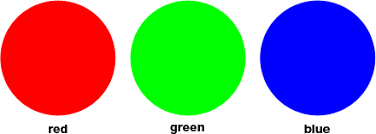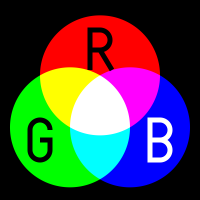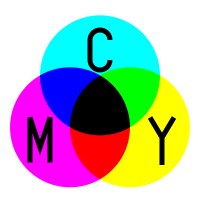Table of contents
- 1. Courseware
-
2. Topics
- Code as Interface
- Browser based graphics
- Enough Javascript to make shiny things
-
Social computing
- Delightful and critical
-
Microinteractions
-
Prototyping like a pro
- Interactive-systems
- Designing digital interfaces for low energy impact
-
V/A/M/XR and the body as the realm of synthetic experience
- Enough aframe to make tiny worlds
- The Face Filter Project
- Phygital Interactions
-
3. Master Digital Design
- 4. Work in Progress
- 5. Zolder
-
6. Design, Art and Technology Arnhem
- Critical Engineering 1
- Critical Engineering 2
-
Assignment book
- Other consciousness
- Digital Invisibility
- Digital Time
- Learned Interactions
- Spooky action at a distance
- Museum of Happy Phones
- The Anti-Product
- Browser History Doppelgänger
- Dumb Scrap / Smart Scrap
- Chindōgu - the art of the “unuseless”
- Antenna Disguise
- Capacitive Sensing Swatches
- Wayfinding in the Data Jungle
- Situational Awareness
- One Thousand Years from Now
-
Learnable bits
- Olympiad of the Senses - Proprioception
- Free Haven
- Esoteric Codes
- Building a controller with the ESP32
- OSC
- Life Support
-
Alien Agency
- Microcontrollers
- 7. Surveys
- 8. Workshops
- 9. Browser-based graphics
Lorem Ipsum is simply dummy text of the printing and typesetting industry. Lorem Ipsum has been the industry's standard dummy text ever since the 1500s, when an unknown printer took a galley of type and scrambled it to make a type specimen book. It has survived not only five centuries, but also the leap into electronic typesetting, remaining essentially unchanged. It was popularised in the 1960s with the release of Letraset sheets containing Lorem Ipsum passages, and more recently with desktop publishing software like Aldus PageMaker including versions of Lorem Ipsum.
Lorem Ipsum is simply dummy text of the printing and typesetting industry. Lorem Ipsum has been the industry's standard dummy text ever since the 1500s, when an unknown printer took a galley of type and scrambled it to make a type specimen book. It has survived not only five centuries, but also the leap into electronic typesetting, remaining essentially unchanged. It was popularised in the 1960s with the release of Letraset sheets containing Lorem Ipsum passages, and more recently with desktop publishing software like Aldus PageMaker including versions of Lorem Ipsum.
Lorem Ipsum is simply dummy text of the printing and typesetting industry. Lorem Ipsum has been the industry's standard dummy text ever since the 1500s, when an unknown printer took a galley of type and scrambled it to make a type specimen book. It has survived not only five centuries, but also the leap into electronic typesetting, remaining essentially unchanged. It was popularised in the 1960s with the release of Letraset sheets containing Lorem Ipsum passages, and more recently with desktop publishing software like Aldus PageMaker including versions of Lorem Ipsum.
Color mixing systems
Most colors are obtained from mixing other colors called primary colors. But depending on the medium we can differentiate between two different approaches to create new colors.
Additive
In the additive color system, the appearance of a color is determine by different gradations of the primary color components, which in the case of light, and theremore most screens, is based on RED, GREEN and BLUE. This is the color mixing system that we used in light-based media such as screens, projectors, etc.


Substractive
For print processes where each layering of the inks results in less light being reflected back, the substractive color system is more appropriate. In this system the primary colors are RYB (RED, YELLOW and BLUE). This is the color system that you likely learnt in primary school as it is the one most commonly used in painting too. RYB is most appropriate when the pigments actually mix. With modern printing technologies there wasn't as much color mixing as there was layering and for this purpose red and blue where replaced by magenta and cyan sometimes known as "process red" and "process blue", which are more effective at filtering when colors are applied in layers or printed using half-toning techniques. This color system is commonly known as CMY, with K sometimes added for pure blacks in inkjet or other photomechanical printing processes.

For the purpose of this course it is not vital that you master conversions between these two color systems, but it is important to understand that what you make on screen might not look the same in print and that color, and how colors are used in these processes will play a role in that difference in quality. So if for example, you use Processing for a generative poster design and you compose your image on screen, you have to make sure that the correct color system is used before you submit it to print if you want your colors to look right.
A classic example of color mixing challenges are any graphic work you do for branding. A company's logo for example will exist and be presented in various media, digital and print. It's on websites, apps, stationary, sometimes it's shown in monochrome, or inverted, etc. You have to make sure that the color experience is consistent.
Generally speaking is you are designing for print, even if you design on screen, you are advised to use CMYK color mixing modes in your software. Similarly if you are working with scanned images from other ink-based media you should do color correction if the end-product is meant to be shown in screen on the RGB mixing system.